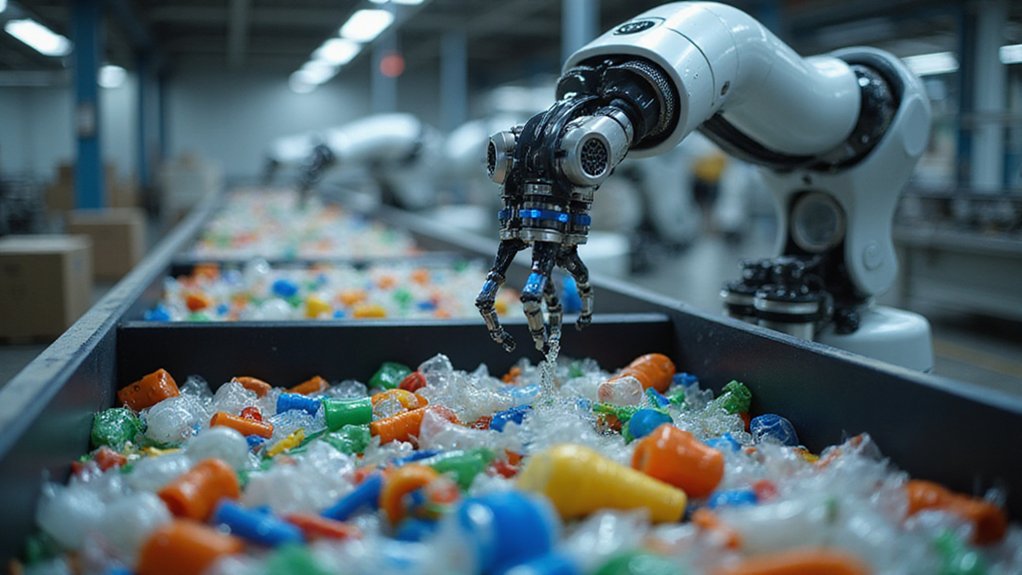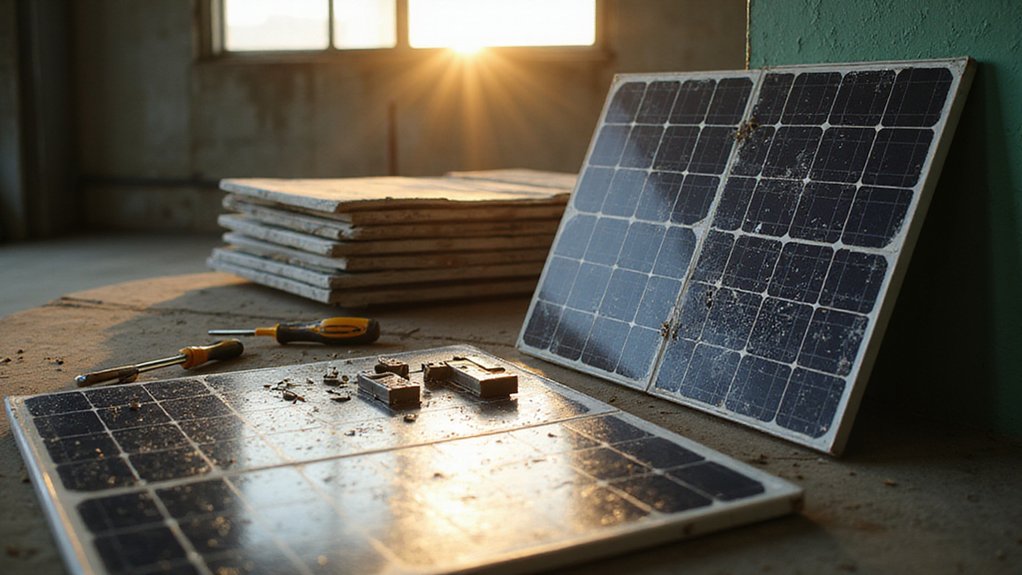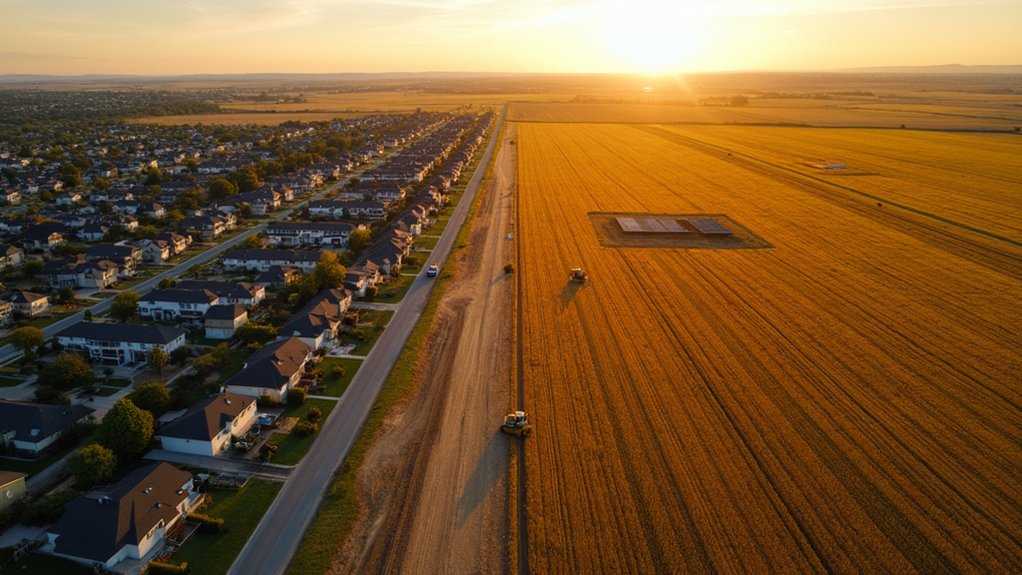While humans have struggled for decades with the mounting plastic crisis, artificial intelligence is stepping in to clean up our mess. The numbers don’t lie – AI-driven sorting systems are boosting material recovery rates by up to 30%. That’s not a typo. Machines are literally rescuing recyclables we’ve been tossing into landfills because our human eyes and hands couldn’t keep up.
These smart systems aren’t just marginally better – they’re crushing it. AI-powered cameras detect recyclable plastics with 98% accuracy, making our manual efforts look pathetically inefficient. Robots can process plastics at 80 items per minute, more than double what humans manage. And they don’t call in sick or need breaks. Companies like AMP Robotics have pioneered these deep learning systems that revolutionize sorting efficiency.
The financial impact? Massive. Implementing AI leads to a 25% reduction in operational costs. Facilities report sorting speeds increasing by half. Transportation costs drop by 20% through optimized logistics. These AI-enabled recycling systems can process 2 tons per hour, quadrupling the manual processing capacity. Turns out computers are better at figuring out efficient routes than humans. Shocking, right?
Quality improvements are equally impressive. The purity of recycled materials jumps 20% with AI systems. Contamination rates plummet by 85%. This means previously “impossible-to-recycle” items like opaque white plastics and multi-material packaging are now fair game. More plastic rescued, less virgin material needed. Similar to how Alaska’s geothermal energy boasts a 96% capacity factor, AI recycling systems deliver consistent performance regardless of external conditions.
Workers aren’t complaining either. Injuries have dropped 35% since the robots took over the dangerous jobs. Humans get to keep their fingers and backs intact, moving to higher-value tasks instead of sorting through our collective garbage.
The market has noticed. AI in waste management hit $400 million in 2022 and is growing at 15% annually. Regulations are pushing adoption even faster, especially in Europe where recycling targets keep getting more ambitious.
The irony isn’t lost here. We created a plastic crisis we couldn’t solve, then built smart machines to fix our mess. Maybe next time we could just skip the crisis part? Just a thought.
References
- https://www.recyclingtoday.org/blogs/news/how-ai-is-helping-improve-plastic-recycling-efficiency
- https://zipdo.co/ai-in-the-recycling-industry-statistics/
- https://polynextconf.com/ai-in-plastic-recycling/
- https://www.waste360.com/industry-insights/how-ai-trends-like-deep-learning-and-real-time-monitoring-are-shaping-recycling-in-2025
- https://news.climate.columbia.edu/2025/06/18/how-ai-is-revolutionizing-the-recycling-industry/








